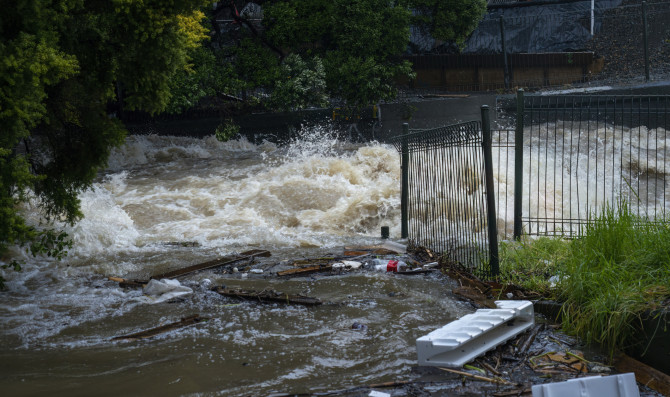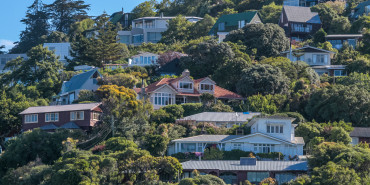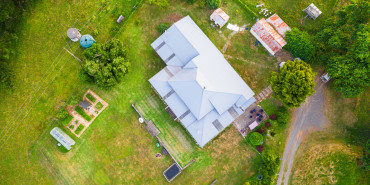Get to know your natural hazards cover
Our beautiful country is at high risk of natural hazards. It’s good to know our national natural hazards insurance scheme has you covered, and to understand its limits.
Read more detail about your coverYour home – the first $300,000
For your home, we provide cover for:
• your home or holiday home
• separate buildings or structures that you use as part of your day-to-day living (for example sheds, garages, pergolas)
• some essential services that serve your home, such as water supply, drainage, sewerage, gas, electricity, or telecommunications.
If your home is damaged by a natural hazard, we can generally provide up to the first $300,000 plus GST towards repairing or replacing your home and related buildings. Any cover over this amount is agreed through your private insurance policy.
It’s a good idea to regularly check that the amount of home cover that you purchase from your insurer is enough to rebuild your home.
Your land – unique cover with limits
Aotearoa New Zealand is one of the only countries in the world with access to residential land insurance, provided by the Natural Hazards Commission. This cover is generally a contribution to repairs, and you can’t buy extra land cover through your insurer.
For your land, we cover a limited area:
• the land under and up to 8m around your home and related buildings and structures; and
• the land under your main accessway up to 60m from the house; and
• some retaining walls, bridges and culverts, to a limit.
Your land cover is capped. We can only provide cover for repair costs up to the land cap, which is based on the value of your insured, damaged land. Because it is a contribution, our cover sometimes won't be enough to fully repair the damage to your property. It’s important to understand these limits and how you can manage the risks to your property.
The NHI Levy gives you access to NHCover
Anyone with a valid private insurance policy that includes fire pays the NHI levy through their private insurance premium, that gives access to NHCover. NHCover provides the first layer of cover for your home, and certain areas of land under and around it
Cover for a range of natural hazards
We cover damage to your home and land from a range of hazards including earthquakes, landslides, volcanic activity, hydrothermal activity, tsunami, storm and flood (land only), and natural hazard fire that occurs because of any of these hazards.
Talk to your insurer
Insurers work on our behalf to assess, manage and settle claims. Talk to your insurer if you need to make a claim, have questions about what’s covered and what’s not, and what additional cover is available through your private insurance policy.
EQC is changing to Natural Hazards Commission
From 1 July 2024 EQC will become the Natural Hazards Commission Toka Tū Ake.
We have new legislation, the Natural Hazards Insurance Act, and any new claims for natural hazards damage that occurred on or after 1 July 2024 will be managed under this new Act. Our cover is called Natural Hazards Cover. Any damage that occurred before 1 July 2024 would be covered under the Earthquake Commission Act 1993.
The cover is similar under both acts.

About Natural Hazards Commission Toka Tū Ake
The Natural Hazards Commission Toka Tū Ake is Aotearoa New Zealand’s unique response to our restless geographical environment.
The scheme was first established in 1945 to ensure all New Zealanders could access natural hazards cover. Nearly 80 years on, we’ve made big changes but stay committed to our work to reduce the impact of natural hazards on people, property and the community by:
1. managing our country’s natural hazard cover home insurance scheme
2. investing in research and education to build more resilient communities
3. helping build New Zealand’s readiness to natural hazards, so we’re here when you need us.


This information provides a general summary of the insurance we provide under under our governing legislation, being the EQC Act for claims for damage that occurred before 1 July 2024, and the NHI Act for claims for damage that occurred on or after 1 July 2024. The Acts will always prevail over the content of this webpage. For more detail please visit our About EQCover page.
- We use the term “home” in this information while the Act uses the term “dwelling”.
- Generally, everyone with valid private insurance for their home or holiday home that includes fire insurance pays the Natural Hazards Insurance levy and has access to our insurance cover.
- Some insurers may offer additional top- up cover for land structures such as retaining walls, bridges and culverts. Talk to your insurer to find out what extra cover is available.
- Information in this webpage is valid for homeowners who pay the Natural Hazards Insurance levy through a private insurer that is a member of the insurance partnership with us. For Direct NHCover customers or those whose private insurer does not partner with us, details on how you access NHCover or make a claim may be different.